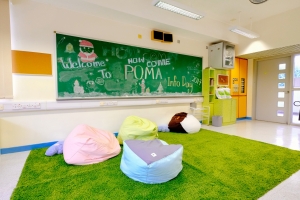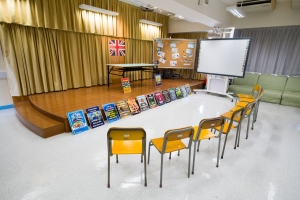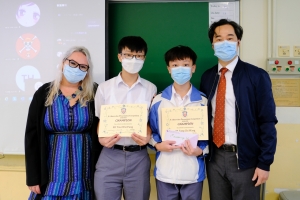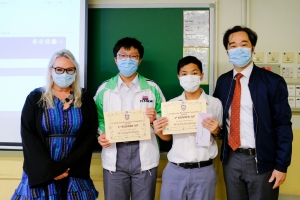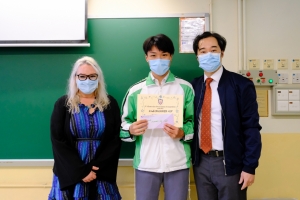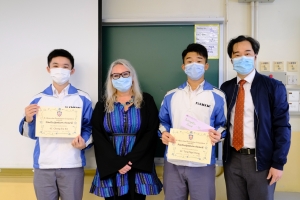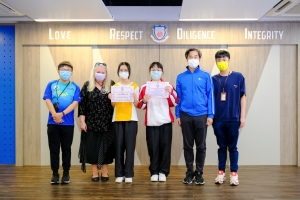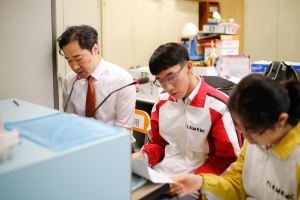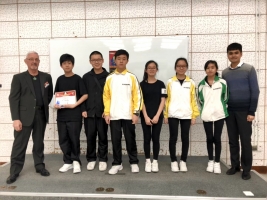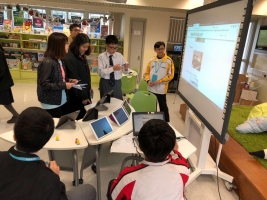英國語文科課程特色 English Language Curriculum
Foster Students’ English Proficiency to
Enhance Their Global Competitiveness
English plays a very important role in international communication. English proficiency opens doors for students and unlocks opportunities. Building confidence, nurturing interest, and practising consistently are essential to mastering the language. To support students in English learning, we optimise their opportunities for learning and using English both inside and outside the classroom.
Provide a student-centred, theme-based, and diversified English curriculum
Our curriculum caters to individual abilities and learning needs. We offer tailor-made LaC (Language Across Curriculum) curriculum and EMI (English as the Medium of Instruction) subjects. We also provide language support, including a summer bridging course for Form 1 students, small-group tutorials for all forms, and writing consultation sessions. Our theme-based materials are carefully designed to help students learn pronunciation, enhance language skills and vocabulary and integrate these skills in reading, writing, listening, and speaking. School-based e-learning materials are developed to support student learning. By integrating diverse learning apps and interactive strategies, students can collaborate with peers and learn English in an enjoyable way. Through extensive reading programmes, diverse writing activities, and informal assignments, students are provided with ample chances to practise written English across various contexts.
Establish an English-rich environment as the ‘third teacher’ to support student learning
An immersive English environment plays an important role in facilitating students’ English learning. During our weekly English-Speaking Day, from morning assembly announcements to after-school activities, students engage in English conversations. These opportunities foster their confidence and language skills outside the classroom. Engaging in fun-filled activities like song dedication, lunchtime busking, and movie appreciation allows students to experience the pleasure of using English. Peer collaboration encourages students to interact and exchange thoughts. Additionally, guests from diverse cultural backgrounds participate in regular after-school activities, such as African drumming and Indian dance, providing authentic situations for students to practise English with English speakers and gain a global perspective.
Emphasise English communication and empower students to be confident English speakers
In small class speaking lessons, students receive personalised feedback and abundant opportunities to practise English. By participating in a variety of internal and external speaking activities, they hone their communication skills and develop confidence in public speaking. These experiences empower students to become proficient and confident English speakers and enhance their competitiveness in their future studies and careers.

